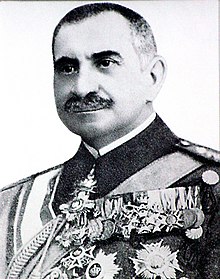Gheorghe Manu

Gheorghe Manu (26 July 1833, Bucharest, Wallachia – 16 May 1911, Bucharest, Kingdom of Romania) was a Romanian Army general, artillery inspector and statesman.
After he finished his high school studies in Romania, he went to Prussia in 1847 to study in the German military academies and in 1853, with the approval of the Romanian government, he joined the Prussian Army as a Sub-Lieutenant.
Returning to his country in 1858, he joined the Romanian Army, being charged with the organization of the Romanian artillery. He was in charge of this task until he resigned in 1884. From 1869 to 1870, Manu, a colonel, was part of the cabinets of Dimitrie Ghica and Manolache Costache Epureanu, heading the War Ministry. In 1874, he was chosen Mayor of Bucharest, keeping this function until 1877.
As the Romanian War of Independence began in 1877, General Manu was the commander of the 4th division, in charge with defending Romania in Oltenița, Corabia, Bechet, Islaz and Turnu Măgurele, but following the offensive, his division took part in the campaign on the plains of Bulgaria, in Pleven and Vidin. He was the first Romanian decorated with Virtutea Militară, in May 1877.
After the war, he was artillery inspector until 1888, when he resigned. He was also a War Minister in the Theodor Rosetti and Lascăr Catargiu governments, between 12 November 1888 and 5 November 1889 (Old Style). He was also Prime Minister between 5 November 1889 and 15 February 1891. On 27 November 1891, in the Lascăr Catargiu cabinet, he became the Minister of State Property, but quit to become the President of the Chamber of Deputies, a post he held until 1895, when he retired.
References
- Dimitrie R. Rosetti (1897) Dicționarul contimporanilor, Editura Lito-Tipografiei "Populara"
- 1833 births
- 1911 deaths
- People from Bucharest
- Conservative Party (Romania, 1880–1918) politicians
- Prime Ministers of Romania
- Romanian Ministers of Agriculture
- Romanian Ministers of Defence
- Romanian Ministers of Finance
- Romanian Ministers of Interior
- Presidents of the Chamber of Deputies (Romania)
- Members of the Chamber of Deputies (Romania)
- Members of the Senate of Romania
- Mayors of Bucharest
- Romanian Land Forces generals


